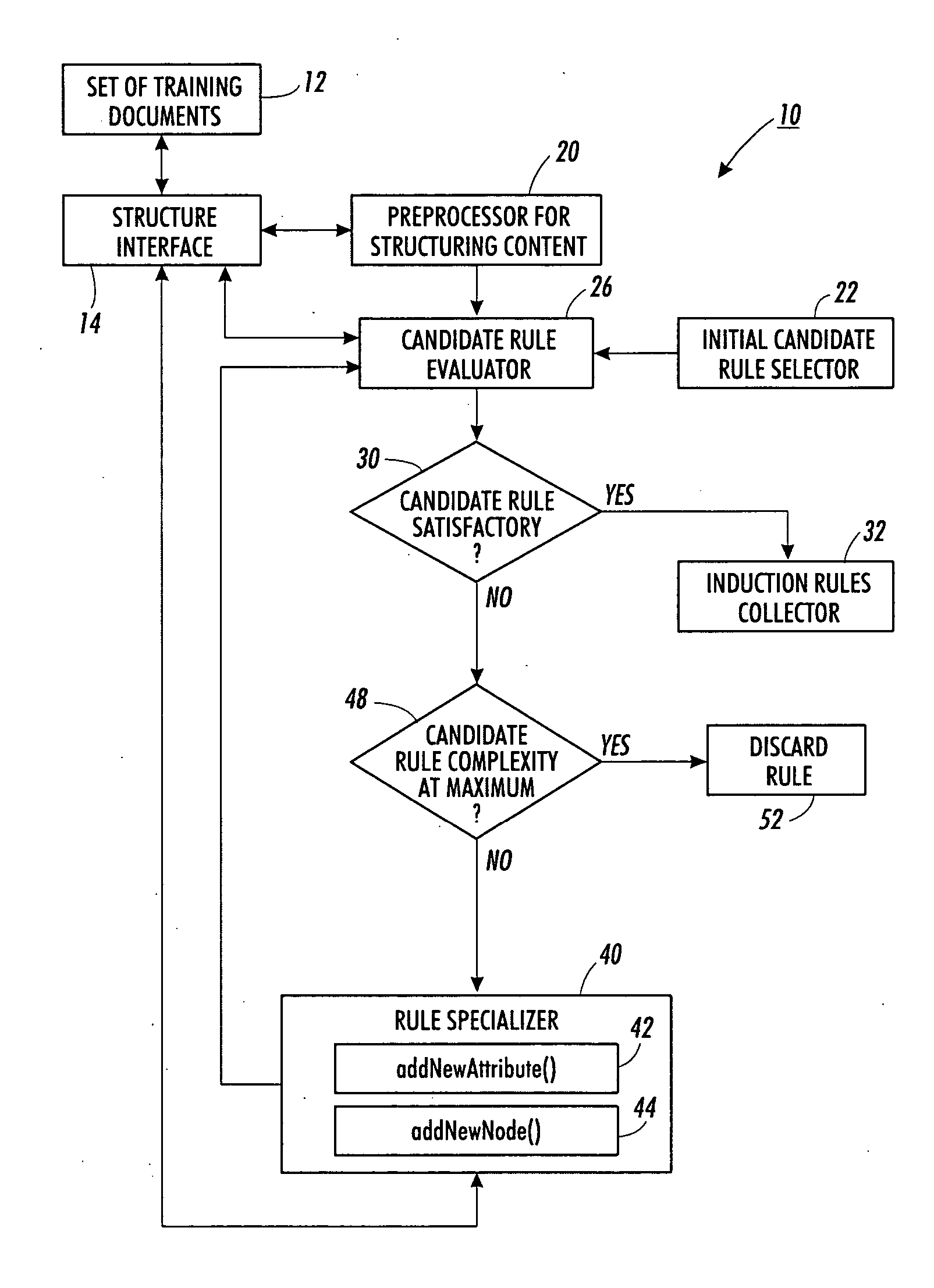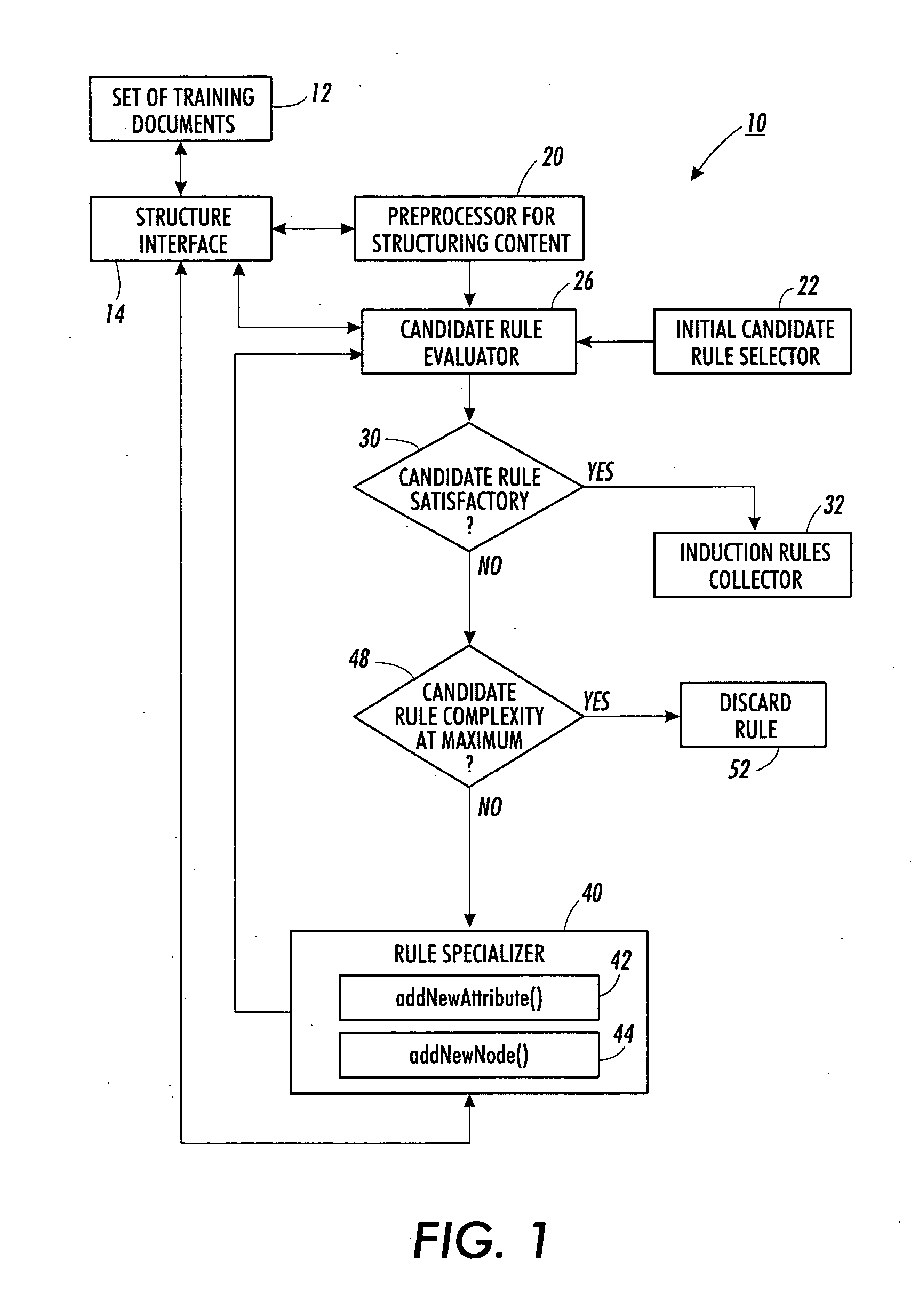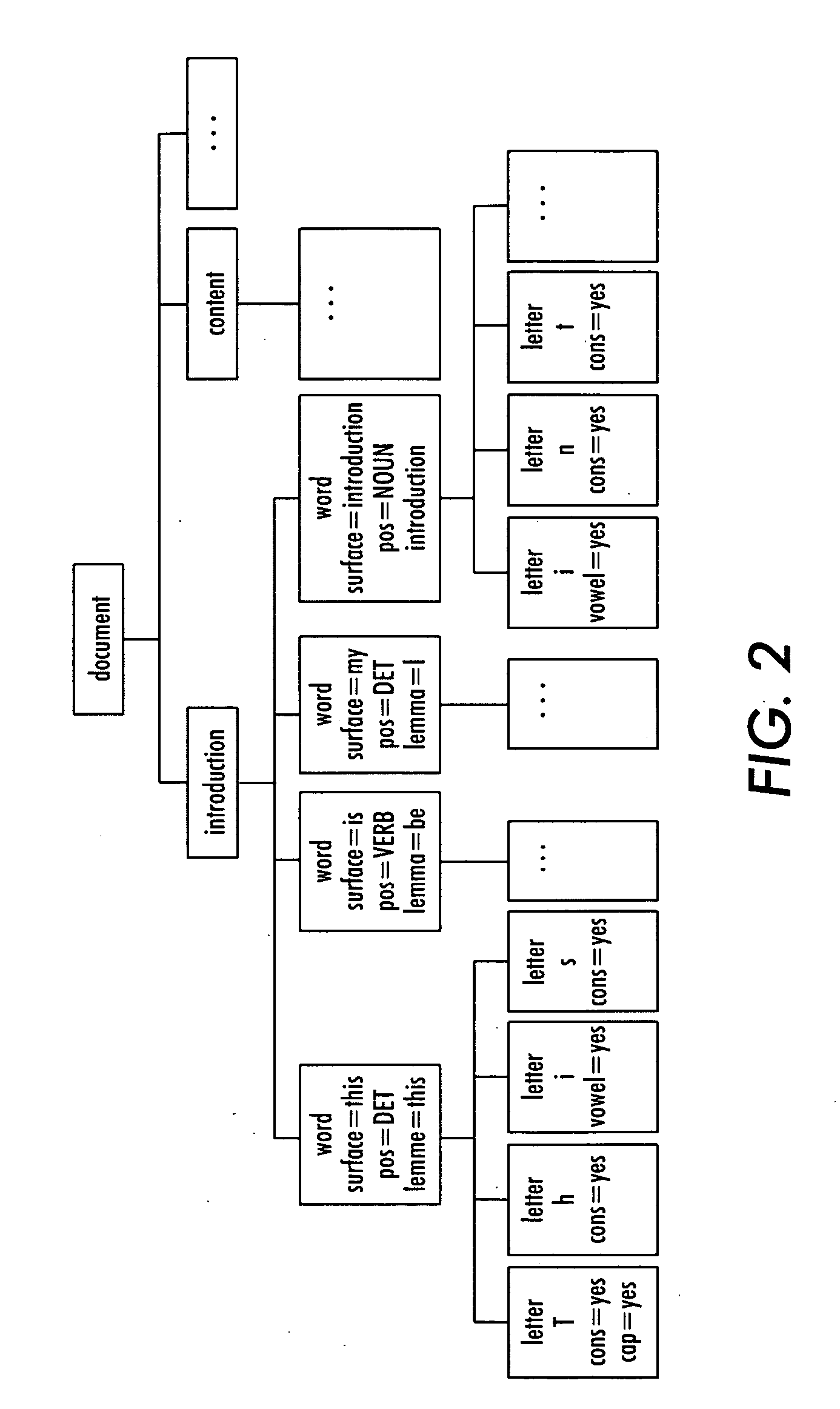XML-based architecture for rule induction system
a rule induction and architecture technology, applied in the field of data classification and data mining, can solve problems such as difficult application of rule induction to structured data
- Summary
- Abstract
- Description
- Claims
- Application Information
AI Technical Summary
Problems solved by technology
Method used
Image
Examples
Embodiment Construction
[0016] With reference to FIG. 1, a rule induction system 10 generates categorization rules by specializing an initial overbroad rule based on a set of training documents 12 that are accessible via a suitable XML structural interface 14, such as an XPath or Document Object Model (DOM) interface.
[0017] A pre-processor 20 optionally processes the training documents 12 to define attributes of nodes of interest for rule induction, to define additional segmenting nodes that extract content of interest for rule induction, or so forth. For natural language processing applications, for example, each content stream (#PCDATA) is suitably segmented into tokens using a linguistic tool such as the Xerox Incremental Parser (XIP), which is described for example in: Ait-Mokhtar et al., “Robustness beyond Shallowness: Incremental Deep Parsing, in Journal of Natural Language Engineering, Special Issue on Robust Methods in Analysis of Natural Language Data, ed. A. Ballim & V. Pallotta (Cambridge Unive...
PUM
 Login to View More
Login to View More Abstract
Description
Claims
Application Information
 Login to View More
Login to View More - R&D
- Intellectual Property
- Life Sciences
- Materials
- Tech Scout
- Unparalleled Data Quality
- Higher Quality Content
- 60% Fewer Hallucinations
Browse by: Latest US Patents, China's latest patents, Technical Efficacy Thesaurus, Application Domain, Technology Topic, Popular Technical Reports.
© 2025 PatSnap. All rights reserved.Legal|Privacy policy|Modern Slavery Act Transparency Statement|Sitemap|About US| Contact US: help@patsnap.com



